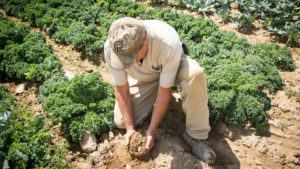Farmers and ranchers manage nearly one billion acres (or approximately 60 percent) of the land in America—land that can act as a natural carbon “sink” by absorbing vast amounts of carbon dioxide from the atmosphere and storing it in plants and soil. Unfortunately, the nation’s soil has degraded over time—losing more than half of its original organic matter content—resulting in erosion, soil nutrient losses, increased greenhouse gasses, and reduced productivity. We must reverse this trend.
We can do so through regenerative agriculture—sometimes also known as restorative agriculture or climate-smart agriculture or carbon farming. Regenerative agriculture practices build soil health and, in doing so, capture atmospheric carbon and put it back into the earth. These practices include no-till farming, low till farming, cover crops, crop rotations, alley cropping, intensive rotational grazing, and silvo-pasture.
By focusing on the entire system, farmers can achieve multiple benefits: for example, healthy soils absorb more water during heavy rains, which reduces runoff, and offer better resilience during periods of drought because the land holds more water. Healthy soils also can help farmers increase yields, increase yield stability, and be more productive in the long term.

Adopting regenerative agricultural practices is among the least costly and most immediate actions that can help reduce greenhouse gas emissions on a meaningful scale. Their extensive adoption can serve as an important bridge until new climate-friendly energy and transportation technologies are developed. However, while there are a growing number of farmers and ranchers taking action to rebuild their soil and adopt soil health management systems, key barriers hinder more widespread adoption. AFT works with farmers, ranchers, and policymakers to overcome these barriers.

